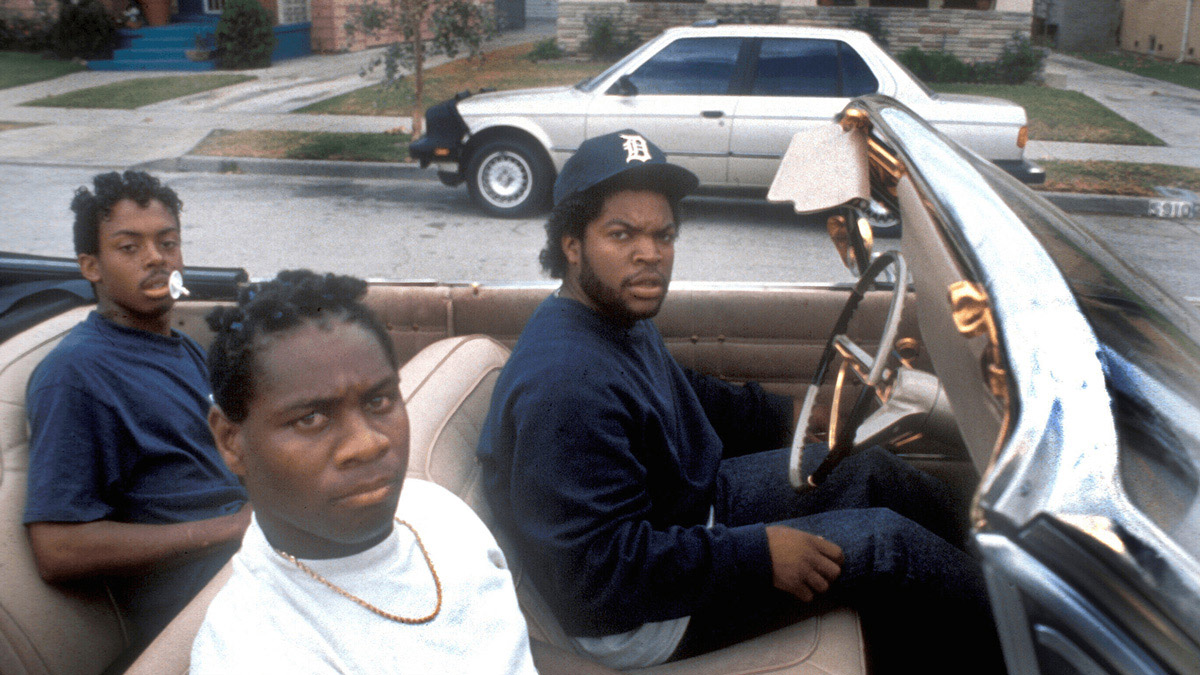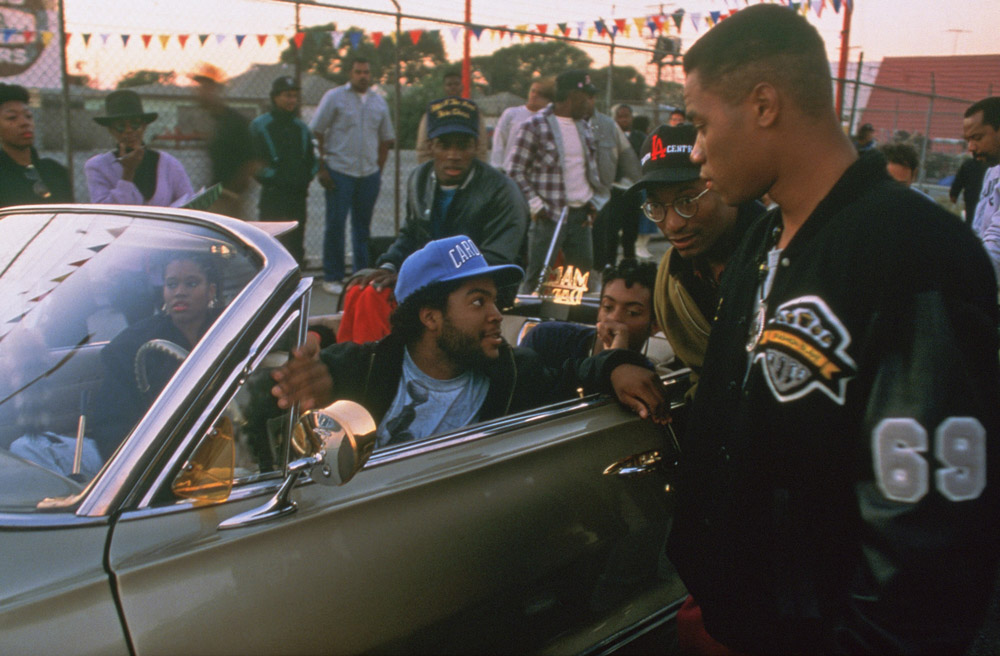
(c) Photofest / Getty Images
What is the Arrival of John Singleton's semi-autobiographical film Boyz 'n the Hood?
2019.06.12
A world where people of the same race kill each other
The gang that Doughboy joins is modeled after the ``Crips,'' an actual color gang whose image color is blue. They had a hostile relationship with the red-wearing "Bloods," and there were daily conflicts between the two gangs. At the beginning of the film, a Arrival is placed at the center of the film that says, ``Black men are killed at a rate of 1 in 21 in America.Many of them are the same black men.'' A social problem is this type of conflict between black people.
Tre's father, Furious, takes this problem seriously and takes Tre and Ricky to Compton (a high-crime city south of South Central) to educate them. The two men are afraid of being attacked as outsiders, and he advises them, ``It's the 1990s. What do you do when fellow black people fear each other?'' He then begins to give a speech to his children and the assembled Compton residents.
"It's not black people who bring yaks into this country, but it's black people who sell and buy yaks. Why are there so many gun stores in black neighborhoods? It's the same reason why there are so many liquor stores in black neighborhoods. Guns and alcohol. Because you think it's okay for black people to fight each other. Is there something like that in Beverly Hills? Think about it, brother."

"Boyz 'n the Hood" (c)Photofest / Getty Images
Starting in the 1970s, black residential areas, known as black ghettos, became popular in American cities. In Los Angeles as well, it was the policies of those in power at the time that effectively segregated blacks by forcing them into black neighborhoods such as Compton and Watts.
The tragedy of people of the same race fighting each other is similar to the situation in which workers who are forced to work for lower wages come to hate workers who are treated a little better than themselves. What workers should really be angry about is the employers who make them work for unfair wages, but instead, friction arises between fellow workers suffering from poverty. So who can be helped? Who will be hurt?

